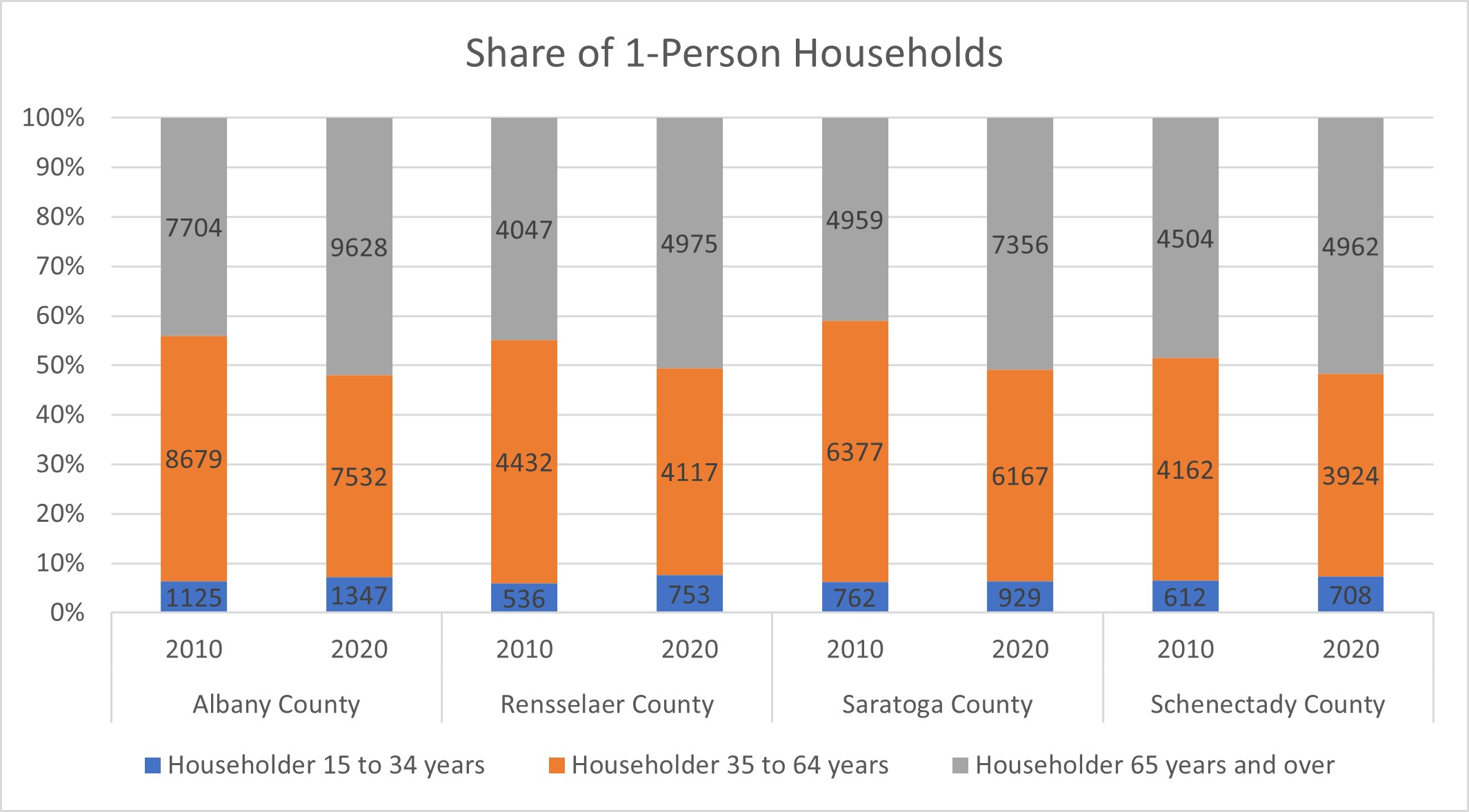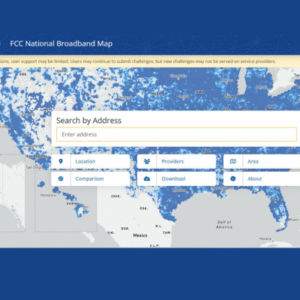Increased number of Individuals Living Alone in the Capital Region
Record number of individuals are living alone, according to the US Census Bureau. From 1940 to 2020 the share of one-person households in the United States more than tripled, with the largest increase from 1970 (17.6%) to 1980 (22.7%).

The rise in the number of people living alone since the 1900s can be attributed to a combination of evolving societal norms, cultural shifts, and national trends. Changes in attitudes toward living arrangements, increased opportunities for women in the workforce, delayed marriages, decreasing national birthrate, changing family structures, and a longer lifespan have all contributed to this trend. Additionally, urbanization, economic independence, and technological advancements have made it more feasible and socially acceptable for individuals to live alone. As a result, the number of 1-person households has increased over time and is reflected in national and local trends.
The highest concentration of 1-person households in the United States is the Midwest (e.g., Minnesota, Nebraska, North Dakota) and Alabama and Mississippi. Locations with the highest concentration of 65+ living alone are found in the central Midwest, as well as Florida, Maine, and Oregon. The states with the lowest concentration of older adults living alone are Alaska and Utah. On a county level, it was noted that larger Counties by population have a greater share of single householders aged 15-64, while smaller counties have more one-person householders aged 65+.
Capital Region
An increase in households with 1-person is not just a national trend but a local trend in the Capital Region too. In fact, the total number of households that have 1-person increased by 4,499 households, or by 9.39% from 2010 to 2020.

Over the past decade, there has been a notable change in the composition of households. Between 2010 and 2020, there has been an increase in the share of single-person households among individuals aged 65 and above, as well as those aged between 15 and 34. Conversely, the quantity of single-person households within the 35-64 age bracket has decreased from 2010 to 2020.


A closer look at the individual counties within the Capital Region reveals the same trend – an increase of 1-person households for those over those over the age of 65 between 2010 and 2020. Between the same time period the share of 1-person householders between 35 and 64 has shrunk in all four counties in the Capital Region, mirroring nationwide trends cited by the Census Bureau.
From 2010 to 2020 in the Capital Region…
- All counties had an increase in 1-person households from 2010 to 2020 with the change as follows:
- Albany County: 5.07% increase
- Rensselaer County: 7.76% increase
- Saratoga County: 18.01% increase
- Schenectady County: 4.81% increase
- 23.11% increase in 65+ 1-person households
In each County from 2010 to 2020…
- Albany County:
- Householder 15 to 34 years: 19.73% increase
- Householder 35 to 64 years: -13.23% decrease
- Householder 65 years and over: 24.98% increase
- Rensselaer County:
- Householder 15 to 34 years: 40.52% increase
- Householder 35 to 64 years: -7.10% decrease
- Householder 65 years and over: 22.90% increase
- Saratoga County:
- Householder 15 to 34 years: 22.00% increase
- Householder 35 to 64 years: -3.30% decrease
- Householder 65 years and over: 48.38% increase
- Schenectady County:
- Householder 15 to 34 years: 15.69% increase
- Householder 35 to 64 years: -5.72% decrease
- Householder 65 years and over: 10.16% increase
A major trend in the summary shown above is there is a large increase from 2010 to 2020 of the population aged 65 and over living alone. Living alone as you age can have negative implications for various aspects of well-being. The absence of regular social interaction can lead to increased feelings of loneliness and isolation, impacting mental and emotional health. Without immediate support available, emergencies or health issues might be exacerbated by delayed responses. Moreover, the lack of companionship and engagement with others can contribute to cognitive decline and a decline in overall mental acuity. Living alone could also lead to neglect of proper nutrition, exercise, and medical appointments, potentially affecting physical health. Additionally, the absence of someone to share household tasks and maintenance can create safety hazards and diminish the quality of living conditions. Overall, while individual experiences vary, the potential downsides of living alone in old age underscore the importance of considering alternative living arrangements that provide social connection, safety, and support.
Below is a map depicting the changing demographics of household types, those living alone, and the older population in the Capital Region by municipality. Use the ![]() button to toggle on and off between layers as well as select a municipality for more information.
button to toggle on and off between layers as well as select a municipality for more information.
Related readings:
A record share of Americans are living alone | The Hill
Home Alone: More Than A Quarter of All Households Have One Person (census.gov)


